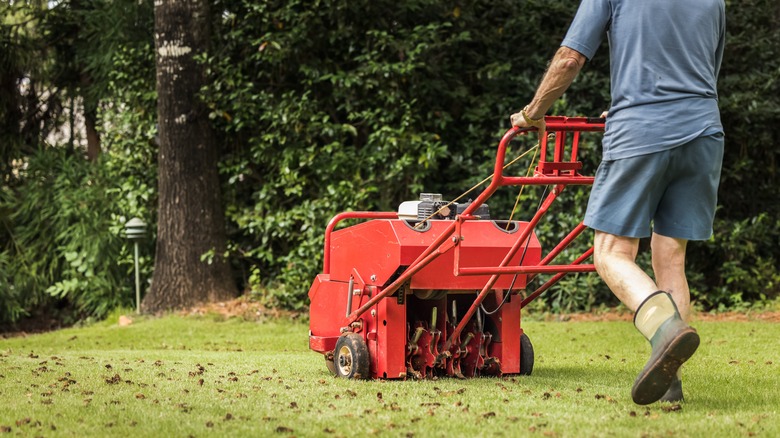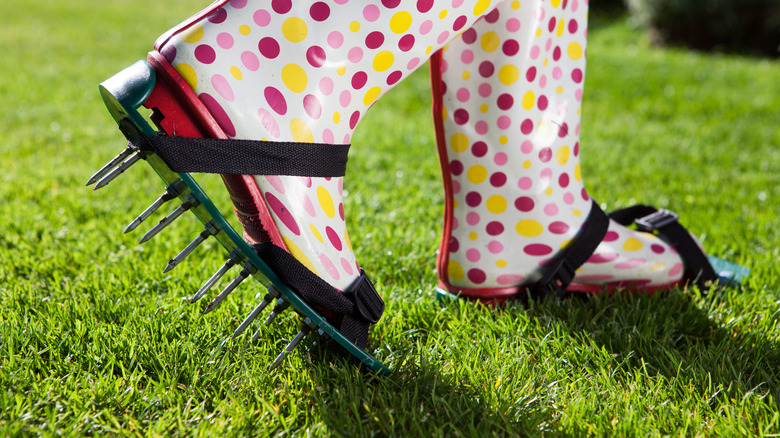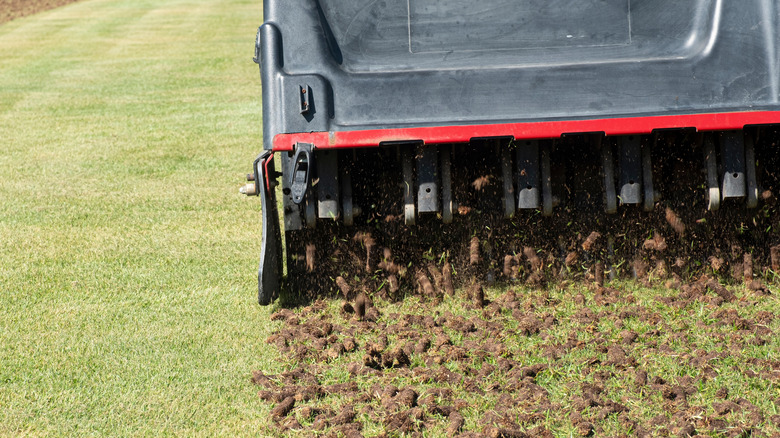How To Know You're Renting The Right Kind Of Aerator For Your Yard This Fall
You'd think adequately watering and mowing your lawn should suffice to keep it lush and healthy. Unfortunately, that isn't the case, and it's time you add lawn aeration to your fall to-do list, especially if the grass looks dry, patchy, or lackluster. Aerifying is particularly important if your lawn experiences heavy foot traffic or has a high clay content. A lawn aerator pokes holes in the landscape to provide your turf with room to breathe while allowing for better water and nutrient penetration.
However, not all lawn aerators are the same. Factors like lawn size, soil type, and desired impact drive the choice between spike and plug aerators. While spike aerators offer short-term effects suitable for small, stone-and debris-free lawns, plug or core aerators are more suited in pretty much every other case. They penetrate deep into the soil and pull out the plug, which ensures your grass grows stronger in the next season. For best results, look for ones with more weight and deeper spikes.
Spike aerators are good for small lawns
Spike aerators use solid tines to perforate your lawn and break up soil clumps lightly. It improves drainage and resource penetration. However, the punctured holes aren't too deep, making these aerators more suitable for lawns with low compaction levels and little activity. Otherwise, you'll be forced to aerate more frequently. Also, they don't dig out the soil plug, minimizing yard damage and maintaining an even surface — prized by gardeners concerned about their landscape's aesthetic.
Although spike aerators are effective, they squeeze and condense the area around the punctured holes, leading to even more compaction in the long run. Yet, many gardeners prefer them to aerate their small yards because they're budget-friendly. But it's best to restrict their use to manage short-term concerns, such as before seeding or fertilizing your turf. Although their narrow spoons provide better coverage over loamy and sandy soils, ensure the area is largely rock- and debris-free to avoid damaging the tines. They're also a great buy if you frequently need to aerify tiny patches on a sloping lawn.
Plug (core) aerators help nutrient penetration
Unlike the dimples created by spike aerators, core lawn aerators punch deeply into the lawn and lift out around 2 to 3 inches of the rounded soil plug using their hollow tines. This enables root-level water, oxygen, and nutrient penetration — particularly useful for grasses prone to severe weather events like droughts. While effective in all cases, core aerators are highly appropriate in yards with clay or highly compact soils because they need intensive aeration.
Moreover, their ability to pull out dirt, rubble, and other soil debris during the process makes them viable in rocky and thatch-ridden gardens. And, if you're unconcerned about thatch build-up, you can leave the soil plugs on the ground for added nutrition. While core aeration is time-consuming, it's far more effective than spiking since it lowers the need for more frequent aeration, a valuable feature for owners of medium or large-sized lawns. However, considering the damage to your high-foot traffic areas, such as around the garden pathway or patio, plug aerators are a good choice even in these small patches.


